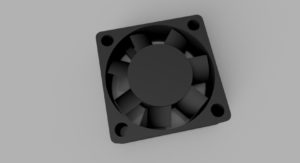Thermistor – NTC 3950 1% 100K
$5.74
Description
NTC thermistors are temperature sensors that are commonly used in 3D printers to measure the temperature of the hotend, the part of the printer that melts and extrudes plastic filament. They are important for maintaining a consistent and accurate extrusion temperature, which is essential for producing high-quality prints.One type of NTC hotend thermistor that is commonly used in 3D printers is the NTC 3950 thermistor. These thermistors are known for their high accuracy and stability, making them an excellent choice for use in 3D printer hotends. They have a resistance of 3950 ohms at 25°C and a temperature coefficient of -3950 ppm/°C, which allows them to accurately measure temperatures in the range of -40°C to 250°C.
A 100K NTC 3950 thermistor is a specific type of NTC 3950 thermistor with a resistance of 100,000 ohms at 25°C. This resistance value is higher than other NTC 3950 thermistors, which means that it is less sensitive to temperature changes. This can make it a good choice for use in hotends that have a slower response time, as it can help to reduce temperature fluctuations.
To use a 100K NTC 3950 thermistor in a 3D printer, it must be connected to the printer's control board, which uses the resistance reading from the thermistor to calculate the temperature. The control board can then use this information to adjust the heat output of the hotend to maintain a consistent temperature.
In Marlin firmware, the 100K NTC 3950 thermistor is typically configured using the "Thermistor" option in the configuration.h file, using the value "11" to indicate the use of a 100K NTC 3950 thermistor. This allows the printer's control board to accurately interpret the resistance readings from the thermistor and calculate the correct temperature.
When shopping for a 100K NTC 3950 thermistor for your 3D printer, be sure to consider its compatibility with your printer and its accuracy. A high-quality 100K NTC 3950 thermistor can help ensure consistent and accurate temperature measurement, which is essential for producing high-quality prints.
Reviews
There are no reviews yet.
Only logged in customers who have purchased this product may leave a review.
 Proudly Made In The USA
Proudly Made In The USA



